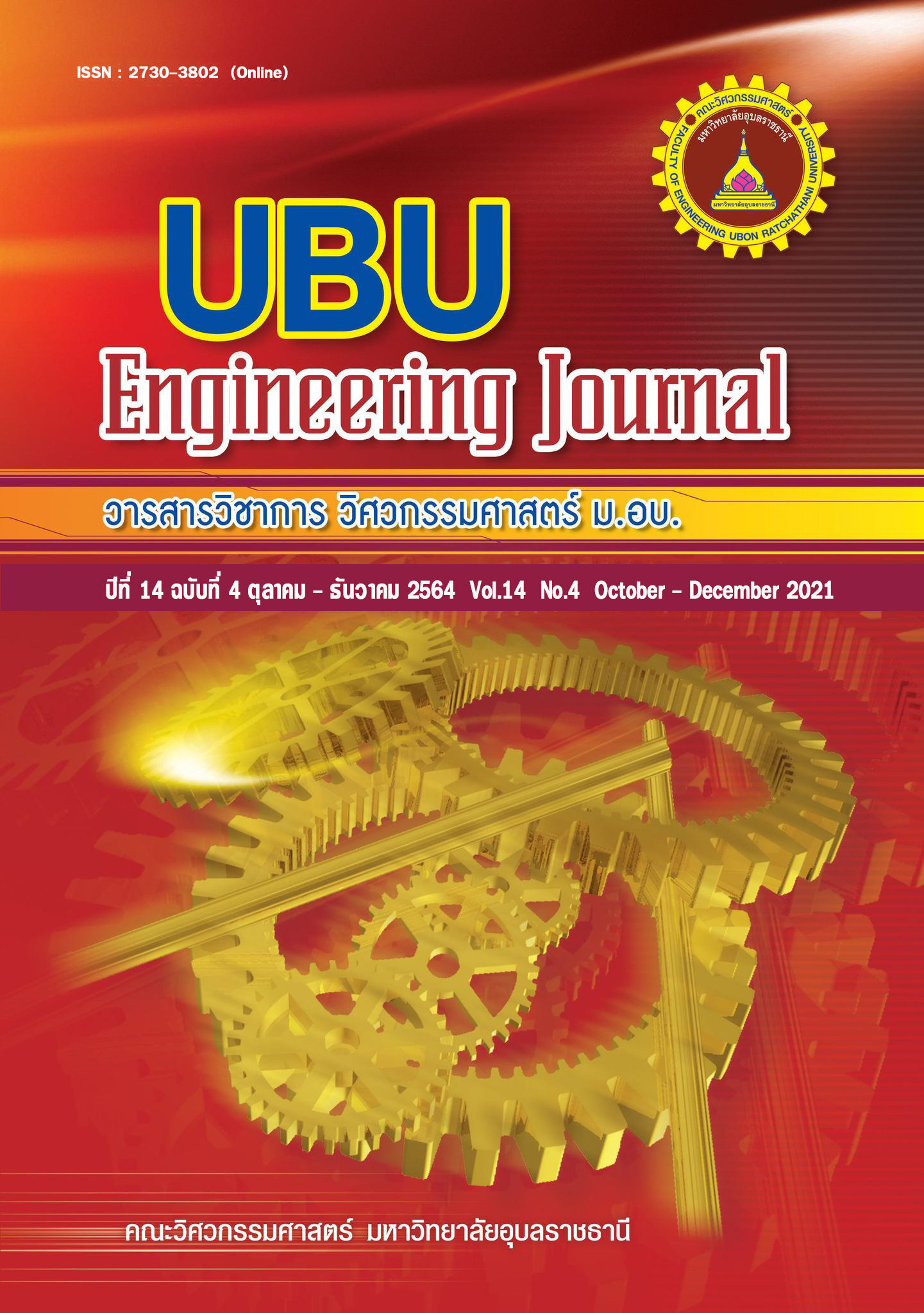A Modified Inverse Distance Weighting Method for Finding Hourly Bias Adjustment to Increase the Accuracy of Omkoi radar rainfall Estimation
Main Article Content
Abstract
The effect of the Earth’s curvature, various geographical features and the variability in each rainfall event results in different rainfall drop size distributions depending on timing. Therefore, using climatological Z-R relationship to estimate radar rainfall can lead to bias in its estimate seeing from the unequal amount of air rainfall and ground rainfall. This study uses rainfall data collected by 2 sources, first is Omkoi rainfall radar that is set at 1.5° elevation angle measuring under the radar’s umbrella that covers 240 kilometers radius, and the other is 122 automatic rain gauge networks. The data had been recorded since January 2015 until October 2017. The collection of 126 selected rainfall events, 100 calibration events (80%) and 26 verification events (20%) had been taken into account to find hourly bias adjustment that is able to reduce the bias in grid cells in size 1x1 kilometer (1 km2) of Omkoi radar rainfall estimation. This research applies the Inverse Distance Weighting method that requires previous rainfall accumulating of various duration: 1 hour, 2 hours, 3 hours, 6 hours, 12 hours and 24 hours from both sources that locate no further than 20 kilometers from the targeted grid. The result of this study indicates that the rainfall estimate process with the application of the equation Z=42R1.6 and the Inverse Distance Weighting method together with the previous rainfall accumulating of 1 hour from both sources, is the most suitable method for Omkoi radar rainfall estimate. This method gives the closest RMSE (Root Mean Square Error), MSE (Mean Square Error) and MAE (Mean Absolute Error) to 0, and closest R (Correlation coefficient) to 1 between estimation of radar rainfall after adjusted and rainfall at automatic rain gauge networks in both calibration and verification events. Comparing to initial radar rainfall estimating with the sole use of the equation Z=42R1.6, this method can increase accuracy in RMSE evaluation to 11.42% (4.39%). In the meantime, other assessments those are MSE, MAE and R, also show that this method can increase the accuracy to 21.83% (8.60%), 3.82% (4.46%) and 22.95% (18.03%) in calibration and verification events, in order.
Article Details
References
[2] สุดาใจ โล่ห์วนิชชัย, ศิริลักษณ์ ชุ่มชื่น, รัชเวช หาญชูวงศ์, วลัยรัตน์ บุญไทย, ธนัท นกเอี้ยงทอง, วิษณุ ก่อพิมพ์. โครงการจ้างเหมาดำเนินการพัฒนาระบบประเมินปริมาณน้ำฝนและพยากรณ์ฝนล่วงหน้า โดยใช้ข้อมูลเรดาร์ตรวจอากาศ ระยะที่ 2: พื้นที่ภาคเหนือ ภาคตะวันออก ภาคกลาง ภาคตะวันออกเฉียงเหนือ และภาคใต้. สถาบันสารสนเทศทรัพยากรน้ำ (องค์การมหาชน). 2561.
[3] Michelson D, Einfalt T, Holleman I, Gjertsen U, Friedrich K, Haase G, Lindskog M, Sztuc J. Weather radar data quality in Europe: Quality control and characterization, COST 717 Working Document WDF_20_200204_1. 2004.
[4] Hydro & meteo GmbH&Co. KG. SCOUT Documentation Version 3.32. Hydro & meteo GmbH & Co. KG. Germany:2016,
[5] Futon RA, Breidenbach JP, Seo DJ, Miller DA, O’Brannon T. The WSD–88D rainfall algorithm. Weather Forecasting. 1998; 13: 377 -395.
[6] Smith JA, Krajewski WF. Estimation of the mean field bias of radar rainfall estimates. J Appl Meteorol. 1991; 30: 397 - 412.
[7] Chumchean S, Seed A, Sharma A. Correcting of radar mean field bias using Kalman filtering approach. J Hydrol. 2006; 317: 123-137.
[8] Silver M, Karnieli A, Marra F, Fredj E. An evaluation of weather radar adjustment algorithms using synthetic data. Journal of Hydrology. 2019 ; 576: 408-421.
[9] Collier C G, Larke P, May B. A weather radar correction procedure for real-time estimation of surface rainfall. Q J Roy Meteorol Soc. 1983; 109: 589–608.
[10] Kitchen M, Brown R, Davies A G, (1994) Real-time correction of weather radar data for the effects of bright band, range and orographic growth in widespread precipitation. Q J Roy Meteorol Soc. 1994; 120: 1231-1254.
[11] Seo D J. Real-time estimation of rainfall fields using radar rainfall and rain gage data. J Hydrol. 1998; 208: 37–52.
[12] Chumchean S, Sharma A, Seed A (2006) An integrated approach to error correction for real-time radar-rainfall estimation. J Atmos Ocean Tech. 2006; 23: 67–79.
[13] Rabiei E and Haberlandt U. Applying bias correction for merging rain gauge and radar data. Journal of Hydrology. 2015 ; 522: 544-557.
[14] Koistinen J, Puhakka T. An improved spatial gauge-radar adjustment technique. In: Proc. 20th Conference on Radar Meteorology, AMS. 1981; 179-186.
[15] Wood S J, Jones D A, Moore R J. Static and dynamic calibration of radar data for hydrological use. J Hydrol Earth Syst Sci. 200; 4: 545-554.
[16] Seo D J, Breidenbach J P, Fulton T, Meller D, O'Brannon T. Real time adjustment of range dependent biases in WSR-88D rainfall estimates due to non-uniform vertical profile of reflectivity. J Hydrometeorol. 2000; 1: 222-240.
[17] Mckee J L and Binns A D. A review of gauge–radar merging methods for quantitative precipitation estimation in hydrology. Canadian Water Resources Journal / Revue canadienne des ressources hydriques. 2016; 41: 186-203.

